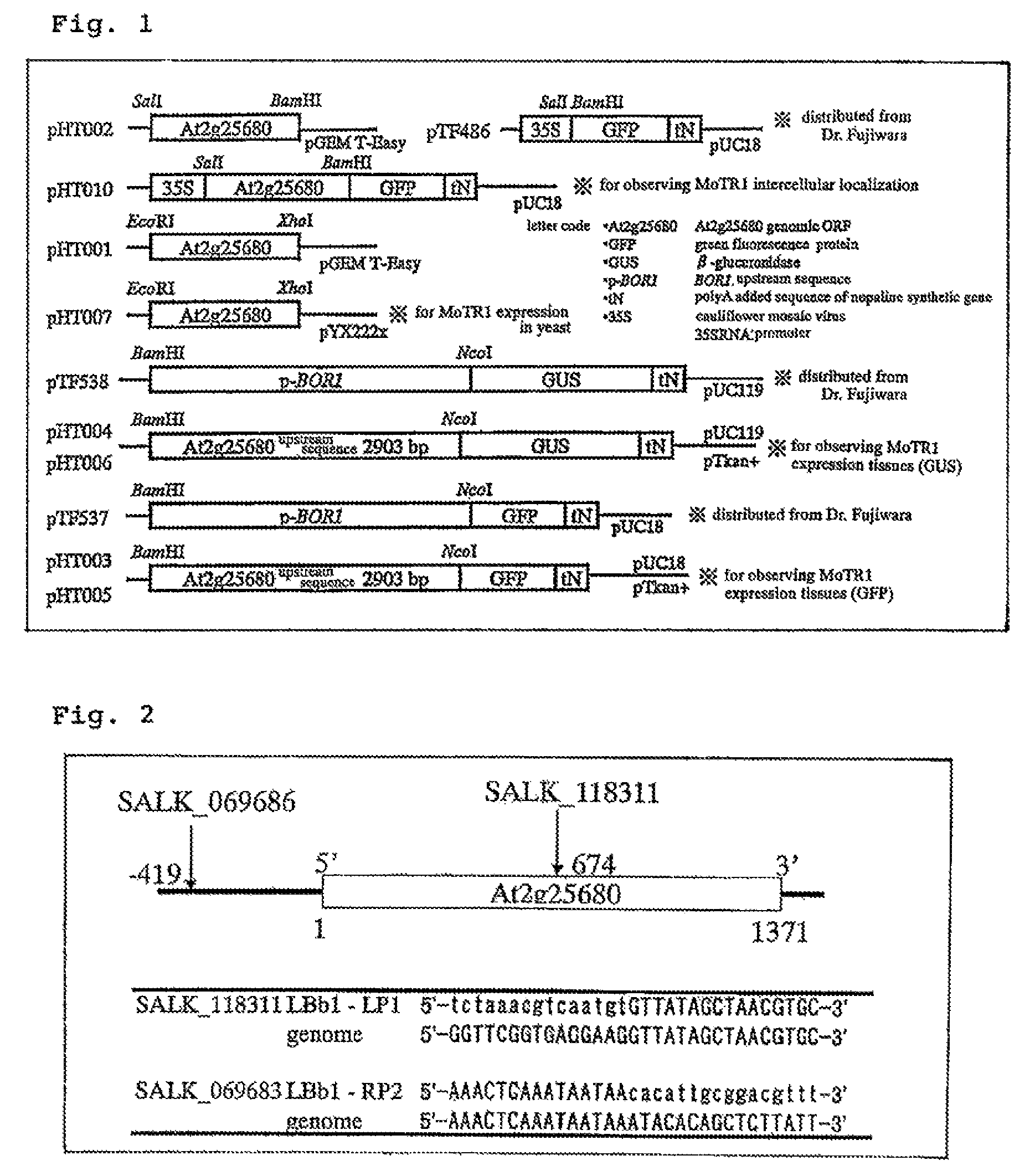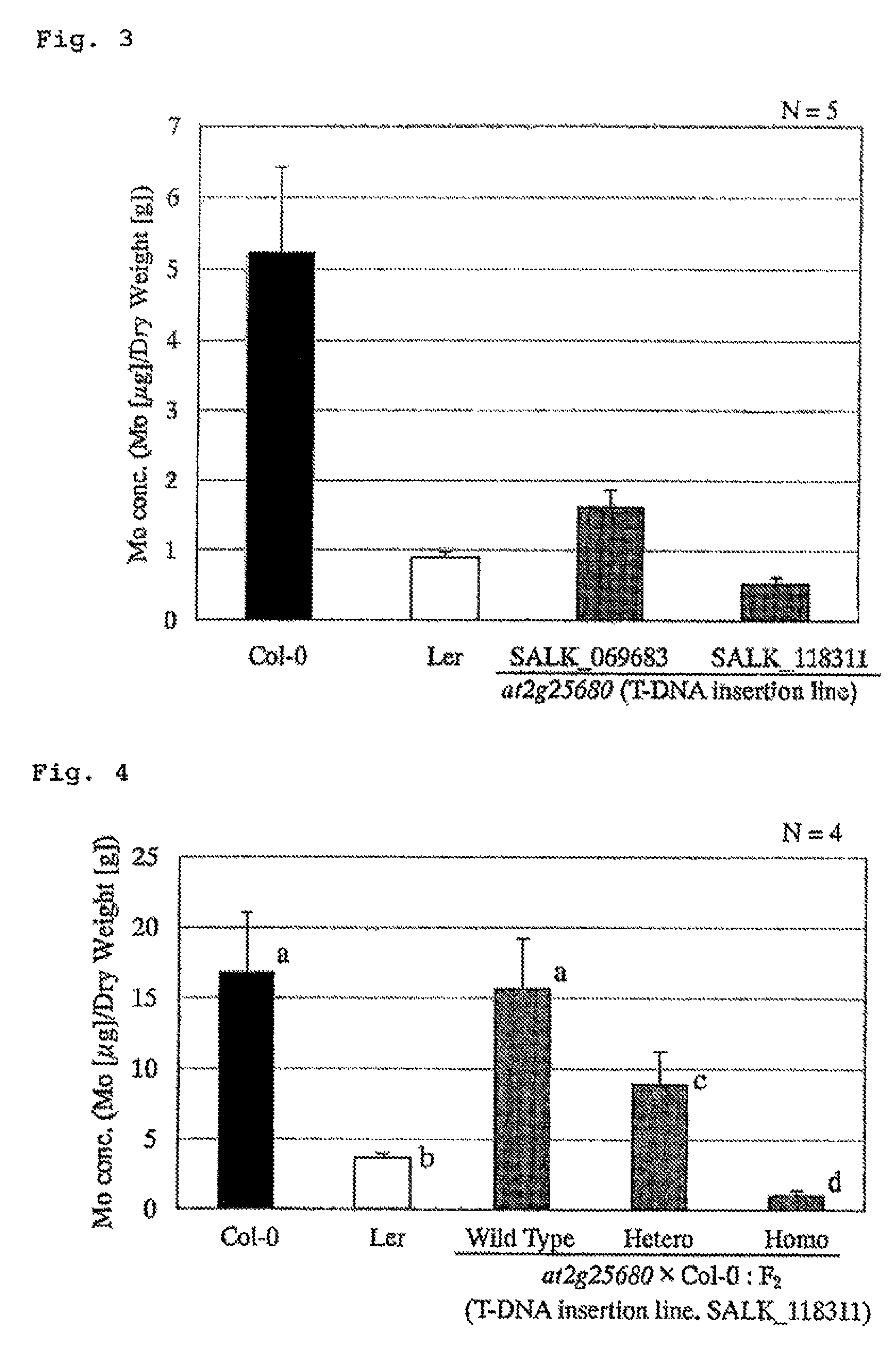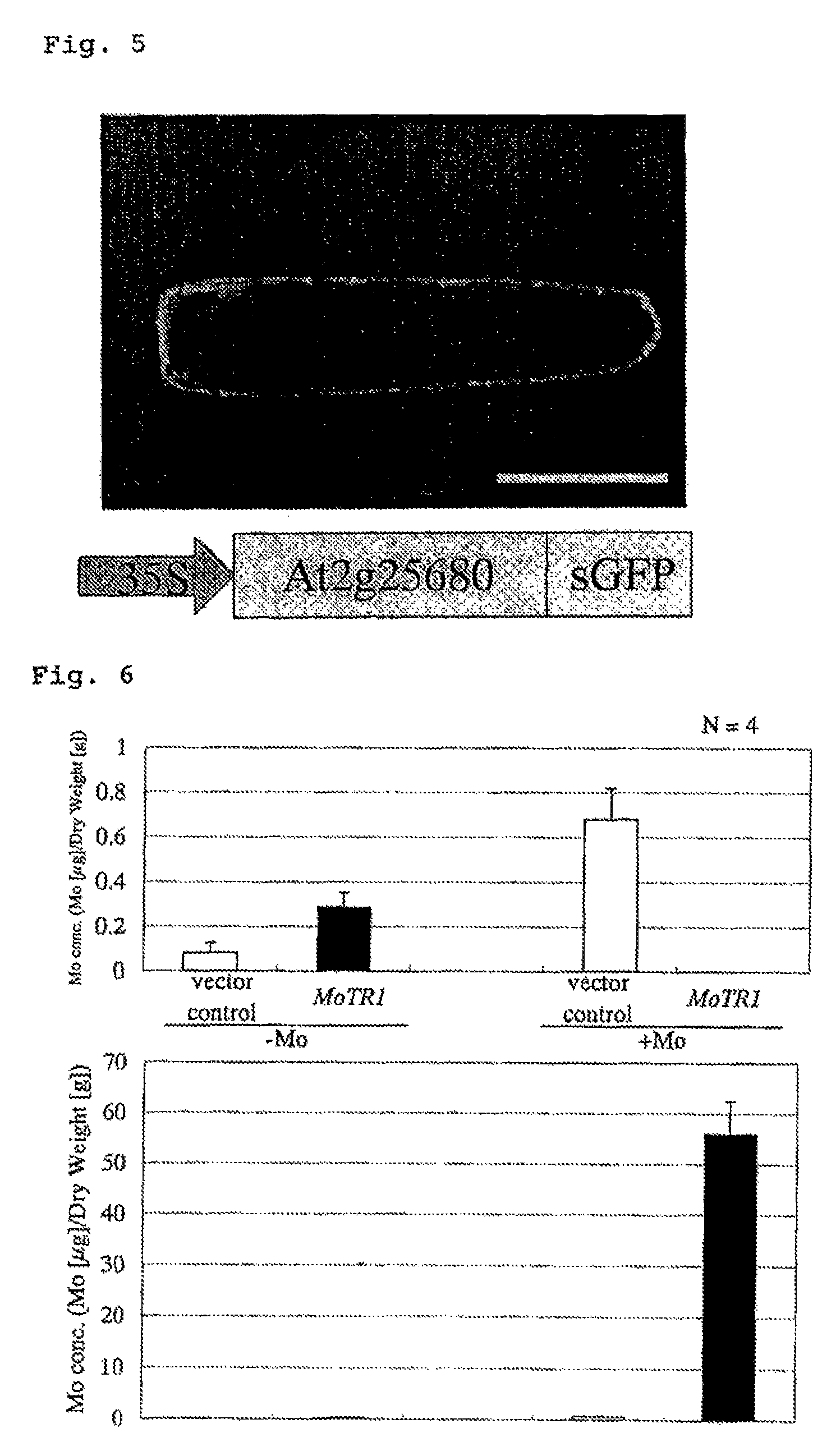Molybdenum transporter gene and use thereof
a technology of molybdenum transporter and transporter gene, which is applied in the direction of peptides, plant/algae/fungi/lichens ingredients, biological material analysis, etc., can solve the problem that mo transporter has not been identified in plants, and achieve the effect of effective fertilizing method or breeding strategy and effective control of incorporation
- Summary
- Abstract
- Description
- Claims
- Application Information
AI Technical Summary
Benefits of technology
Problems solved by technology
Method used
Image
Examples
example 1
[0083]Materials and Methods
[Growth of Plants]
[0084]In the present experiment, Arabidopsis thaliana accessions Col-0 and Ler and a recombinant inbred (RI) line obtained by crossing the same (Lister and Dean, 1993) were used. Stocks in the laboratory were used for Col-0 and Ler. RI lines were distributed from Nottingham Arabidopsis Stock Centre. Moreover, SALK—069683 and SALK—118311, foreign gene fragment (T-DNA)-introduced knockout strains, were distributed from SALK institute as mutants. Background of these mutants is Col-0.
[0085]Cultivation of Arabidopsis thaliana was performed by modifying a part of a method described previously (Hirai, M. Y., Fujiwara, T., Chino, M. and Naito, S. (1995) Effects of sulfate concentrations on the expression of a soybean seed storage protein gene and its reversibility in transgenic Arabidopsis thaliana. Plant Cell Physiol. 36: 1 / 331-1 / 339). Seeds were inoculated on Rockwool (Nittobo Co., Tokyo, Japan) arranged on a plastic tray, and were treated by v...
example 2
[0134]Results
[QTL Analysis for Mo Concentration in Arabidopsis thaliana Leaves]
[0135]The present inventors compared the elemental composition of accessions Col-0 and Ler leaves, and found out that Mo concentration in Col-0 leaves was about 3 times higher compared to that of Ler. Further, by a QTL analysis using 18 strains of RI lines crossing Col-0 and Ler, they found out that QTL which dominates Mo concentration in leaves exists in a region between 2 gene markers, mi238 and er, on the upper arm of chromosome no.2.
[0136]Therefore, in order to identify the gene that determinates Mo concentration in leaves, genotypes and Mo concentration in leaves were investigated for 16 strains of RI lines having a recombination between gene markers mi 238 and er (CL 36, 59, 84, 90, 160, 177, 179, 191, 194, 237, 253, 295, 303, 358, 370, 395; Lister, C. and Dean, C. (1993) Recombinant inbred lines for mapping RfLP and phenotypic markers in Arabidopsis thaliana. Plant J. 4: 745-750). The results are s...
example 3
[0159]Discussion
[Phenotype of MoTR1]
[0160]When culturing a knock-out strain in which T-DNA is inserted in At2g25680 (MoTR1-1 and MoTR1-2) is cultured in MGRL water culture solution containing 1.7×102 nM of MoO42−, Mo concentration in leaves decreased to about ⅓ of that of wild-type strains (FIG. 3). Further, Mo concentration in MoTR1-1 and MoTR1-2 leaves lowered to about ½ of that of the wild-type strain (Col-0) in a strain having the inserted gene as hetero, and to about 1 / 10 in a strain having the inserted gene as homo (FIG. 4). These results suggest that the mutation by which Mo concentration in leaves decreases in MoTR1 is semi-dominant.
[0161]On the other hand, MoTR1-1 and MoTR1-2 did not show any specific phenotypes other than lowering of Mo concentration. When cultured in a water culture solution containing 1.7×102 nM of MoO42−, growth of MoTR1-1 and MosTR1-2 was not inhibited during nutrition growth phase and genital growth phase. Seeds obtained from MoTR1-1 and MoTR1-2 germi...
PUM
| Property | Measurement | Unit |
|---|---|---|
| pH | aaaaa | aaaaa |
| pH | aaaaa | aaaaa |
| temperature | aaaaa | aaaaa |
Abstract
Description
Claims
Application Information
 Login to View More
Login to View More - R&D
- Intellectual Property
- Life Sciences
- Materials
- Tech Scout
- Unparalleled Data Quality
- Higher Quality Content
- 60% Fewer Hallucinations
Browse by: Latest US Patents, China's latest patents, Technical Efficacy Thesaurus, Application Domain, Technology Topic, Popular Technical Reports.
© 2025 PatSnap. All rights reserved.Legal|Privacy policy|Modern Slavery Act Transparency Statement|Sitemap|About US| Contact US: help@patsnap.com



